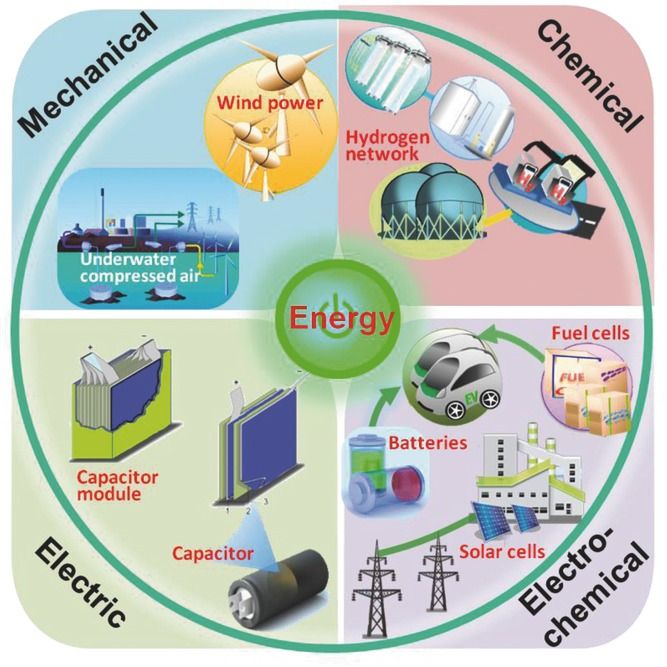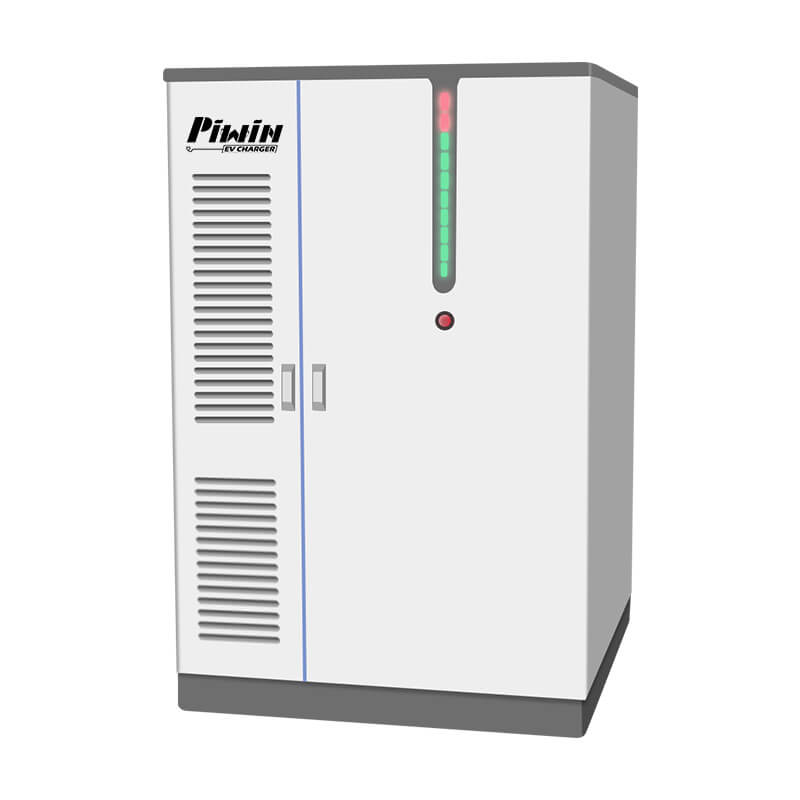
Products
Fast, Reliable, Everywhere

Solutions
Efficient, Innovative EV Charging Solutions.
News
We are committed to the innovation and application of EV charging.
In the realm of new energy solutions, Battery Energy Storage Systems (BESS) play a pivotal role. They are essential for stabilizing grids, integrating renewables, and ensuring energy reliability amid evolving energy landscapes. This article delves into the diverse types of BESS, exploring their functionalities, advantages, and applications. Whether you're navigating grid stability or optimizing energy efficiency, this guide offers authoritative insights and practical knowledge. Join us as we explore the transformative potential of these technologies, shaping a greener, more resilient energy future.
Battery Energy Storage Systems (BESS) are pivotal components of modern energy infrastructure, serving as crucial elements in the integration and optimization of renewable energy sources. These systems are designed to store electrical energy generated during periods of low demand or high renewable energy production for use during peak demand periods or when renewable sources are not generating electricity. By storing excess energy and releasing it when needed, BESS help stabilize electrical grids, improve reliability, and enhance energy efficiency.
The importance of BESS lies in their ability to address the intermittent nature of renewable energy sources such as solar and wind. They provide grid operators with flexibility in managing fluctuations in energy supply and demand, thereby reducing the need for conventional fossil fuel-based power generation. This capability not only supports the transition towards sustainable energy solutions but also contributes to grid stability and resilience against power outages.
In addition to their role in renewable energy integration, Battery Energy Storage Systems(BESS) offer benefits across various sectors including commercial, industrial, and residential applications. They enable peak shaving to reduce electricity costs, provide backup power during emergencies, and support the development of microgrids in remote or off-grid locations. Furthermore, advancements in BESS technology, such as improved efficiency and longer lifespan of batteries, continue to drive their adoption in diverse energy management strategies worldwide.
As the energy landscape evolves towards greater sustainability and resilience, understanding the diverse types and applications of Battery Energy Storage Systems(BESS) becomes increasingly essential. This article explores these aspects comprehensively, providing authoritative insights into how BESS contribute to shaping a more efficient and sustainable energy future.

Battery Energy Storage Systems (BESS) encompass a diverse range of technologies crucial to modern energy solutions. Understanding these systems is essential for enhancing grid stability, integrating renewables effectively, and optimizing energy efficiency. Join us as we explore the functionalities and applications of various Battery Energy Storage Systems(BESS) types, uncovering their transformative potential in shaping a sustainable energy future.
Mechanical energy storage systems convert electrical energy into mechanical energy for storage and later conversion back into electricity. They include technologies like pumped hydro storage and compressed air energy storage, offering high efficiency, scalability, and flexibility in grid applications. These systems are crucial for balancing energy supply, storing renewable energy, and providing rapid response capabilities in electricity grids.
Characteristics:
1.High Energy Conversion Efficiency:
2.Versatility:
Advantages and Disadvantages:
1.Advantages:
2. Disadvantages:
Application Scenarios:
1.Grid Balancing and Peak Shaving:
Mechanical energy storage systems play a crucial role in balancing electricity supply and demand, enhancing grid stability and efficiency.
2. Storage for Renewable Energy:
Integrated with sources like solar and wind, these systems store excess energy for use during periods of low renewable energy generation.
3. Industrial and Commercial Backup Power:
Used in industries and businesses as backup power sources to address sudden electricity demands or emergencies.
Mechanical energy storage systems represent a robust solution in the realm of energy storage, offering high efficiency, scalability, and reliability. From pumped hydro to compressed air energy storage, these systems play pivotal roles in balancing grid operations, integrating renewable energy sources, and providing backup power solutions for various industries. While they come with challenges such as high initial costs and specific geographical requirements, their ability to store large amounts of energy and respond swiftly to fluctuating energy demands underscores their importance in the transition towards sustainable energy practices.
Electrochemical energy storage systems are at the forefront of modern energy solutions, powering everything from portable electronics to electric vehicles and grid-scale applications. These systems utilize chemical reactions to store and release electrical energy efficiently, offering versatility, scalability, and sustainability in our quest for reliable and clean energy sources. In this section, we delve into the characteristics, advantages, disadvantages, and practical applications of electrochemical energy storage systems, aiming to provide a comprehensive understanding of their role in new energy charging stations and beyond.
Characteristics:
1.Efficient Energy Conversion:
Electrochemical systems convert electrical energy into chemical energy during charging and convert it back to electrical energy during discharging.This process is efficient, making them suitable for various applications, including electric vehicles and grid stabilization.
2. Variety of Technologies:
Includes lithium-ion batteries, sodium-sulfur batteries, and flow batteries, each with specific characteristics suited to different needs such as energy density or cycle life.
3. Scalability and Flexibility:
These systems can be scaled from small-scale applications like portable electronics to large-scale applications like grid-scale energy storage.
They offer flexibility in design and deployment to meet diverse energy storage requirements.
Advantages and Disadvantages:
1.Advantages:
2. Disadvantages:
Application Scenarios:
1.Electric Vehicles (EVs):
Electrochemical batteries are widely used in EVs due to their high energy density, efficiency, and ability to handle frequent charge-discharge cycles.
2.Grid-Scale Energy Storage:
Used for storing excess renewable energy (from solar or wind sources) to stabilize grid operations and ensure continuous power supply.
3.Portable Electronics:
Small-scale electrochemical batteries power a wide range of devices, from smartphones to laptops, providing reliable and portable energy solutions.
Electrochemical energy storage systems play a pivotal role in modern energy solutions, offering efficiency, scalability, and versatility across various applications. By understanding their characteristics, advantages, and challenges, stakeholders can make informed decisions regarding their deployment in new energy charging stations and beyond. As technology continues to advance and costs decrease, electrochemical systems are poised to drive further innovations in energy storage, supporting the transition towards sustainable and resilient energy infrastructures.
Battery energy storage systems are pivotal in the realm of new energy charging stations, offering efficient solutions for storing and deploying electricity. From enhancing renewable energy integration to supporting grid stability and powering electric vehicles, these systems play a vital role in advancing sustainable energy practices. In this section, we delve into the characteristics, advantages, disadvantages, and practical applications of battery energy storage systems. Our aim is to provide a comprehensive understanding of their significance in modern energy infrastructure and their role in shaping the future of clean energy solutions.
Characteristics:
1. Energy Density:
2.Cycle Life and Efficiency:
3.Versatility and Scalability:
Advantages and Disadvantages:
1. Advantages:
2. Disadvantages:
Application Scenarios:
1.Renewable Energy Integration:
Batteries store excess energy generated from renewable sources like solar and wind, ensuring continuous supply during periods of low generation.
2.Electric Vehicles (EVs):
Lithium-ion batteries power EVs, offering long driving ranges and fast charging capabilities, promoting widespread adoption of electric mobility.
3.Backup Power and Grid Stability:
Used in critical facilities and homes for backup power during outages, and in grid-scale applications for stabilizing voltage and frequency.
Battery energy storage systems represent a cornerstone in the evolution towards sustainable energy solutions, providing reliability, efficiency, and versatility across various applications. By understanding their characteristics, advantages, and challenges, stakeholders can harness these systems to optimize energy usage, enhance grid resilience, and support the transition to a cleaner energy future. As advancements continue and costs decrease, battery energy storage systems are poised to play an increasingly integral role in shaping the energy landscape worldwide.
Thermal energy storage systems are revolutionizing the landscape of energy storage solutions, offering efficient ways to capture, store, and utilize heat energy. From leveraging renewable energy sources to optimizing industrial processes and enhancing grid stability, these systems play a crucial role in advancing sustainable energy practices. In this section, we explore the characteristics, advantages, disadvantages, and practical applications of thermal energy storage systems.
Characteristics:
1.Storage Medium Diversity:
2.Efficiency and Heat Retention:
3.Scalability and Integration:
Advantages and Disadvantages:
1.Advantages:
2.Disadvantages:
Application Scenarios:
1.Solar Thermal Power Plants:
Thermal energy storage enables solar power plants to generate electricity beyond daylight hours, improving grid reliability.
2.District Heating and Cooling:
Used in urban areas for district heating in winter and cooling in summer, reducing peak demand on energy grids.
3.Industrial Processes:
Industrial facilities utilize thermal storage for process heating and cooling, optimizing energy use and reducing operational costs.
Thermal energy storage systems represent a pivotal technology in the realm of sustainable energy solutions, offering efficiency, flexibility, and environmental benefits. By understanding their characteristics, advantages, and challenges, stakeholders can leverage these systems to enhance energy resilience and reduce carbon footprints. As advancements continue and applications expand, thermal energy storage systems are poised to play a crucial role in shaping the future of energy storage solutions worldwide.
Battery Energy Storage Systems (BESS) are pivotal in grid stabilization strategies, adeptly managing peak shaving by storing surplus electricity during periods of low demand and releasing it during peak hours. This capability helps to stabilize voltage fluctuations, enhance grid reliability, and optimize energy distribution.
In the realm of renewable energy integration, BESS serve as essential tools for storing excess energy generated from intermittent sources like solar and wind. By storing renewable energy during times of high production and delivering it during low production, BESS facilitate grid stability and enable higher renewable energy penetration. Their sophisticated control systems ensure seamless integration and operational efficiency.
Battery Energy Storage Systems(BESS) are integral components of microgrid and off-grid solutions, providing reliable power backup and energy management. They enable microgrids to operate autonomously, supporting critical infrastructure and remote communities. BESS ensure uninterrupted power supply by storing energy from diverse sources, including renewables and conventional generators, thereby enhancing energy resilience and sustainability.

In the domain of electric vehicle (EV) charging infrastructure, Battery Energy Storage Systems(BESS)are deployed to manage grid demand and optimize charging efficiency. By storing renewable energy and managing peak loads, BESS facilitate rapid and efficient EV charging without overburdening the grid. This application supports the transition to electric mobility by ensuring reliable charging infrastructure and reducing carbon emissions.
Implementing Battery Energy Storage Systems (BESS) involves several critical considerations that encompass economic viability, environmental impact, and policy frameworks. These factors are pivotal in determining the success and effectiveness of BESS deployment in various applications.
Economic viability is a primary consideration in the implementation of BESS:
Choosing the right installation environment is crucial for BESS:
Navigating policy and regulations is vital for BESS deployment:
Implementing Battery Energy Storage Systems (BESS) involves navigating complex considerations related to economics, environmental impact, and regulatory frameworks. By carefully evaluating these factors, stakeholders can optimize the deployment of BESS to achieve both economic benefits and environmental sustainability goals.
Exploring the diverse types of Battery Energy Storage Systems (BESS) reveals a landscape rich with innovation and practical applications. Each technology, from lithium-ion to flow batteries, presents unique advantages tailored to specific energy storage needs. As these systems evolve, they promise to significantly enhance grid reliability, support renewable energy integration, and drive sustainable energy solutions forward. Embracing these advancements ensures a brighter, more resilient future for global energy systems.
BESS are systems that store electrical energy in batteries for later use. They play a crucial role in managing energy supply-demand dynamics, enhancing grid stability, and integrating renewable energy sources.
BESS include various types such as lithium-ion batteries, flow batteries, solid-state batteries, and more. Each type has unique characteristics suited to different applications based on factors like energy density, cycle life, and cost-effectiveness.
BESS offer several benefits, including:
BESS enhance energy resilience by providing backup power during grid failures, supporting critical infrastructure, and enabling rapid response to demand fluctuations or emergencies.
